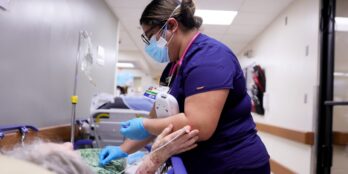
21st Century Cures Act Compliance – Part Two: Beyond Policy, Advancing Interoperability
 3 min
3 min
We recently shared updates around the extended compliance deadline for the ONC’s 21st Century Cures Act: “Interoperability, Information Blocking, and the ONC Health IT Certification Program,” and CMS’s “Interoperability and Patient Access” rules. Beyond understanding the Cures Act itself, a key component to navigating these changes is having a foundational grasp of what they really mean for the healthcare industry – and why it matters.
I’ve got one word for you: interoperability. Yes, we are still talking about interoperability. Why? Because it continues to be a top pain point for many organizations and barrier to coordinated care.
The Need for Interoperability
The Cures Act is intended to allow easier access to – and exchange of – patient health information. Health systems have historically been hesitant to share this information outside of their facility for fear of the security risks. The siloes created in doing so have widened gaps in patient health information and undermined the care offered by skilled nursing and long-term and post-acute care (LTPAC) facilities.
As it was originally envisioned, interoperability should be built on transparency and connectivity, with a goal of allowing easy access to critical patient health information, regardless of where care is administered. Unfortunately, interoperability is something that providers continue to struggle with. In many cases the IT infrastructure doesn’t allow data to seamlessly transfer from one system to another. But the cost of not fulfilling on this promise is significant. When timely care decisions are needed, failing to make that health data available can severely impede a provider’s operations and result in detrimental outcomes for the patient.
Interoperability in Action
The COVID-19 pandemic has exacerbated this problem even further. Take, for example, a patient who has had a severe immuno response to a COVID-19 infection and requires hospitalization. After they arrive at the hospital, staff may not have access to all of the patient’s health data and could be missing critical information, such as underlying conditions and medical history, which are necessary to make the best care decisions for the patient. Even if the hospital were able to access the patient’s data, time is of the essence. Immediate intervention can be critical. Any delay in care can increase risk to the patient.
Now consider that this patient is older and needs to be transferred to a skilled nursing facility (SNF) for post-acute treatment after being discharged from the hospital. Traditionally, that patient’s health information is sent by fax to the new facility, creating disjointed, manual data entry processes and elongating care transitions.
By establishing rules around information blocking, the Cures Act advances interoperability and enables new levels of information sharing that will help providers deliver better care and help patients better manage their health.
Our Commitment
Enhancing the interoperability of our technology will continue to be a central focus, not only in response to the regulations, but because we believe this is the direction that the healthcare industry is headed to improve patient outcomes.
Our work goes beyond meeting minimum regulations. We will continue innovating to stay ahead of these industry shifts and lead coordinated care into the future. After all, interoperability – as it was envisioned – should be built on transparency and connectivity, allowing providers easier access to a patient’s critical health information regardless of where they administer treatment.
Interested in learning more? Check out our first Cures Act blog post for more resources to help you better understand and interpret the rules for effective compliance across the healthcare ecosystem. And stay tuned for our next blog, which will focus on how PointClickCare is advocating for the senior care industry.
January 19, 2021






